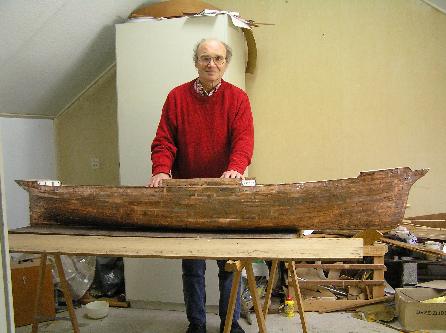
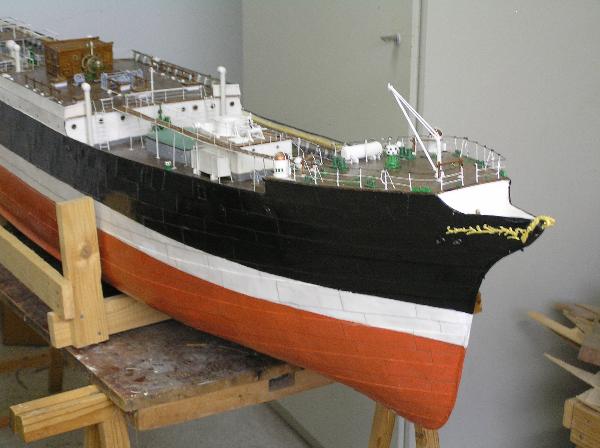
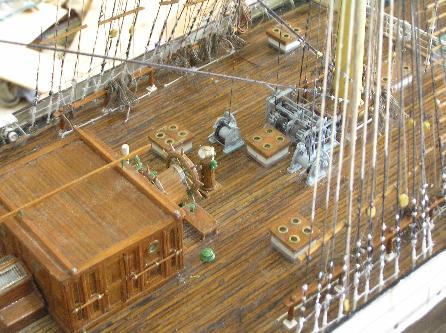
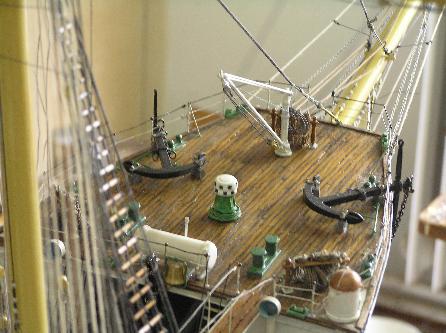
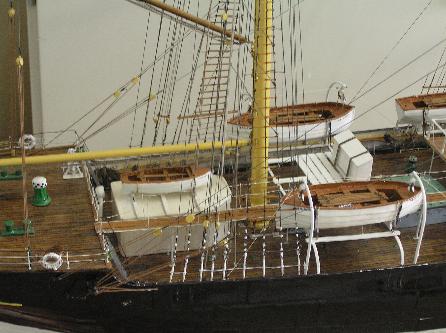
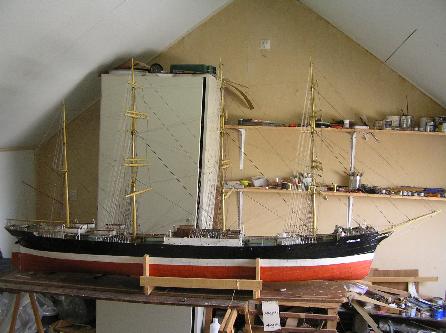
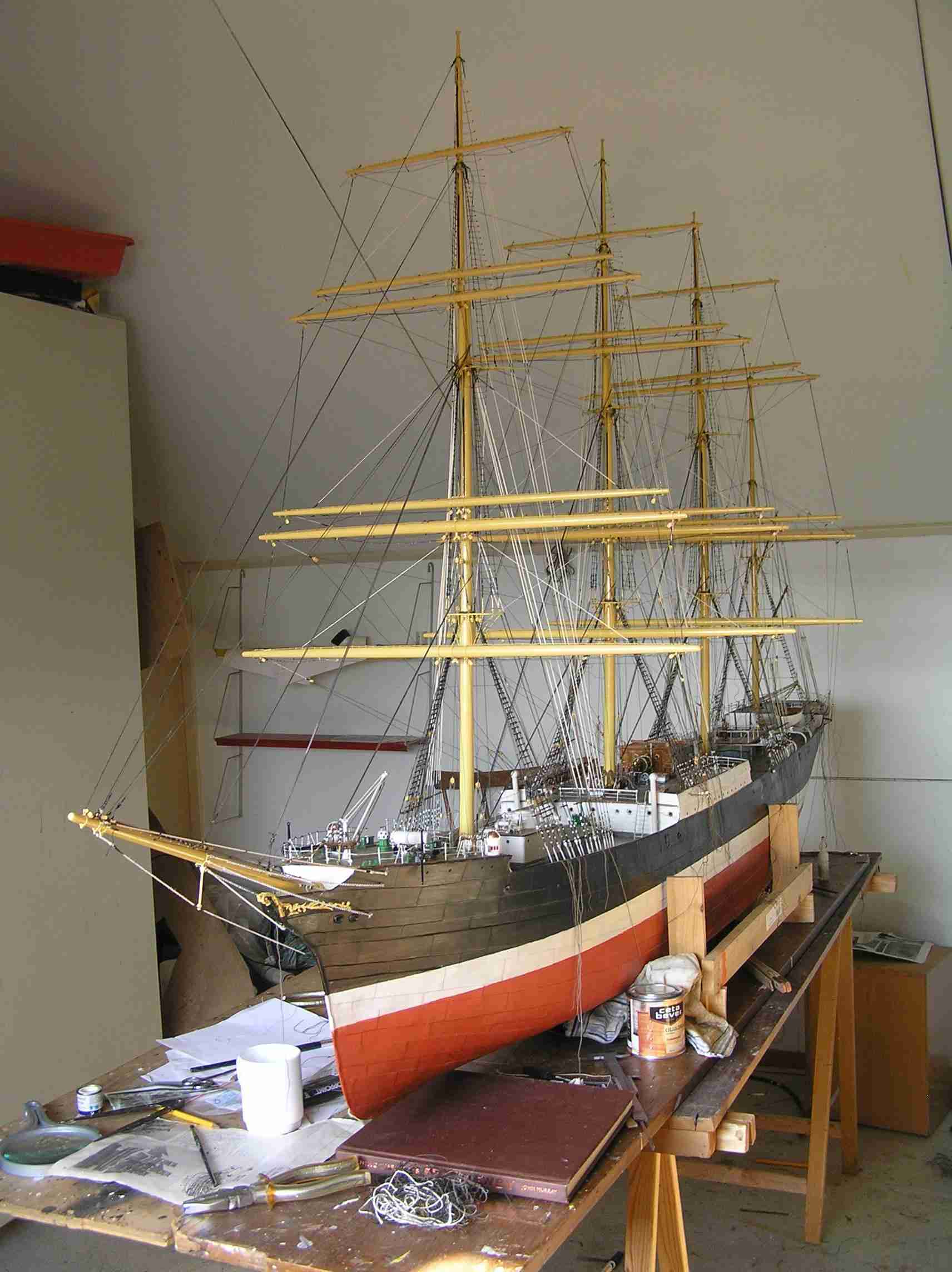
In 1914 both Hans and Kurt were in Astoria USA and waiting for a wheat cargo, but the beginning of the Great War kept them in port. In 1917 when the USA came into the war the ships were seized by the government. Kurt got the name Dreadnought, but that name had already been given to another seized German ship. On order of the President of the USA the name was changed to Moshulu; the American owner had an Indian wife and in her language "Moshulu" meant without fear. Hans became the Mary Dollar and never sailed again as a four-masted barque. She was hulked in 1930 after laying idle since 1914, and used as a barge and later as a drinking and gambling hole outside of territorial waters. In 1941 she was refitted as a six-masted schooner and put in the lumber trade. Later she was sold to the Portugese and in 1948 she stranded, was salved, but later broken up.
The Moshulu sailed for the USA till 1930. She carried mostly lumber to Australia and Australian wheat. But in 1930 it was clear that the ship could not make a profit any more and so she was laid up in Seattle. In 1935 Gustaf Erikson of Mariehamn bought her for $12,000 as a replacement for the old three-masted ship Grace Harwar (1889-1935). It was the last deepwater sailing ship which Erikson bought. The crew was sent by the cheapest way; by ship over the Atlantic and by bus through Canada to Seattle. The rigging needed a lot of replacement, and about 50 tons of new steel wire was used. There was no complete set of sails on board, so a set sails of a smaller ship was bought, which must have looked funny when they were set. The ship went with a cargo of lumber to Australia and with wheat back to Europe. The ship sailed in the Australian wheat trade till 1939. Erik Newby (1919-2006) was as an apprentice on board during the last voyage. He wrote a book, The Last Grain Race, and two photo books about that voyage. After the beginning of the Second World War the ship sailed to Argentina and back with a grain cargo to Norway. The ship arrived near Norway during the German attack on that country. The Germans seized the ship and brought it to Farsund where it was "leased" by the German government. The owner tried to get her back, but the Germans refused.
After some time the ship was hulked to avoid becoming a beacon for air raids. Later she was towed to Kirkenes where she was used as a barge. The masts and sails were kept in a warehouse and lost in a fire. She survived the war and was given back to the Erikson company. In 1947 the hull was sold for $24,000 to a Norwegian owner who wanted to convert her into a motorship. She capsized during a storm and sunk, but was raised. In 1952 she was bought by the German Schliewen, who had also bought the four-masted barques Pamir and Passat. He had plans to re-rig and put engines into the ship and use her as third cargo-training ship. But the costs of the Pamir and Passat made him broke, and the Moshulu was never re-rigged. The ship was used as a grain silo in Stockholm and later in Nantaali (Finland). In 1973 the ship was bought by a American committee who wanted to restore a New York harbour sight from about 1900, including some sailing ships. The Moshulu was re-rigged in the Netherlands, but with a show rigging with which the ship could never sail. The ship never reached New York and was sold to the Walt Disney company who laid her up in Philadelphia as a Mickey Mouse attraction. She later became a restaurant, was again restored after a fire, and still used as a restaurant with a Mickey Mouse rigging. A sad existance for one of the best four-masted barques ever built.

|  |

|  |

|  |